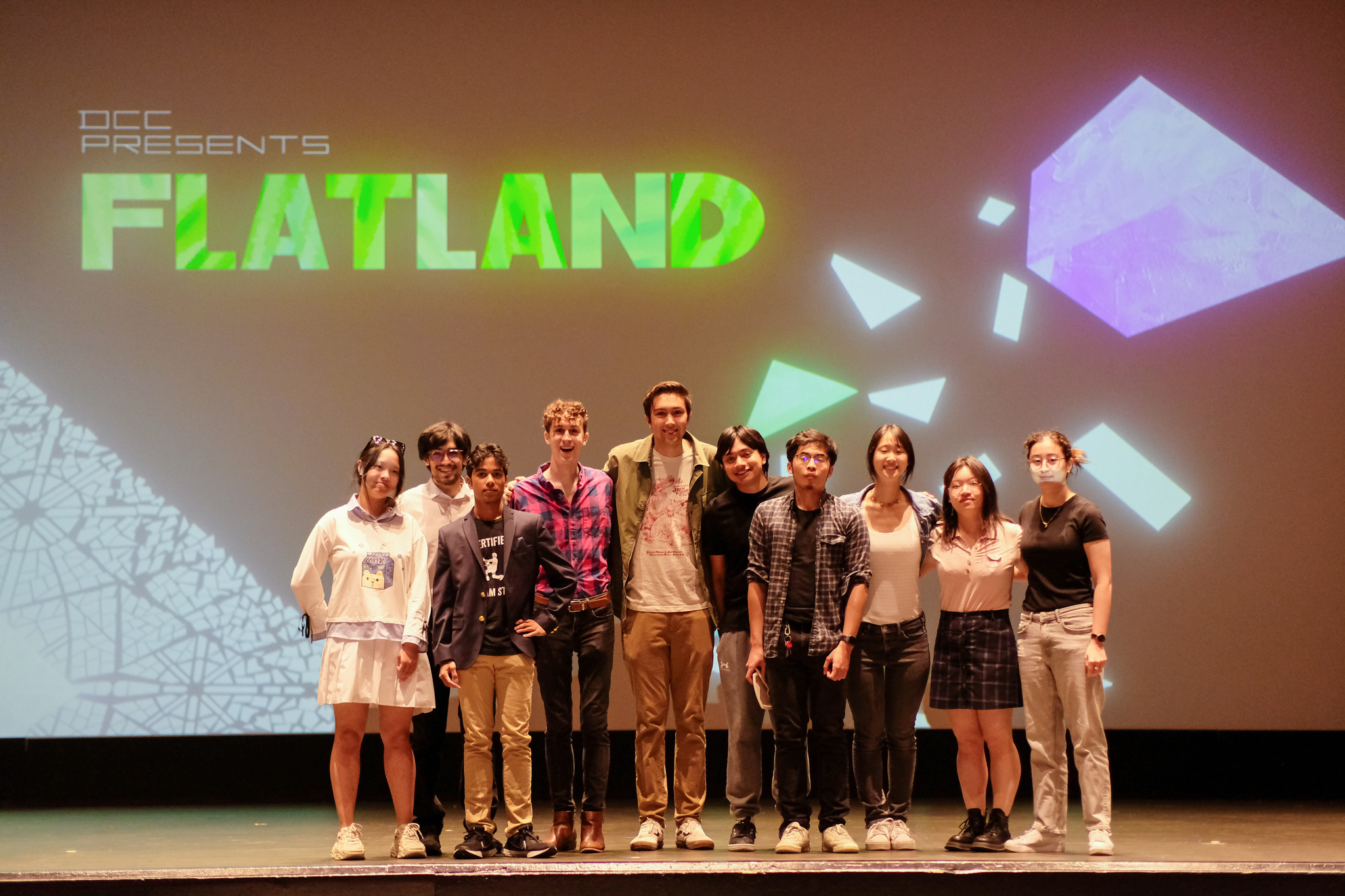A small blue hexagon cocks its head, coyly signaling to its friends, a purple diamond and a green triangle, to follow. They race off through a two-dimensional grid of obstacles, chased by a fury of small gray star-shaped guards, all on a soundscape of jazz rhythms that propel them forward. In a cloud of relief, they break into a three-dimensional world and look perplexed by their newfound freedom. Finally, one of them, the purple diamond, drops back into its rightful place in the grid with a satisfying *clink*, while its two friends look on from above, floating in an uncertain limbo as if to ask: “What’s next?”
In “Flatland,” shapes without eyes, mouths, limbs—or any body part at all—are given unique personalities through thoughtful animation and sound composition. The viewer watching this action-packed five-minute film can’t help but connect emotionally with these endearing characters and the philosophical implications of their story.


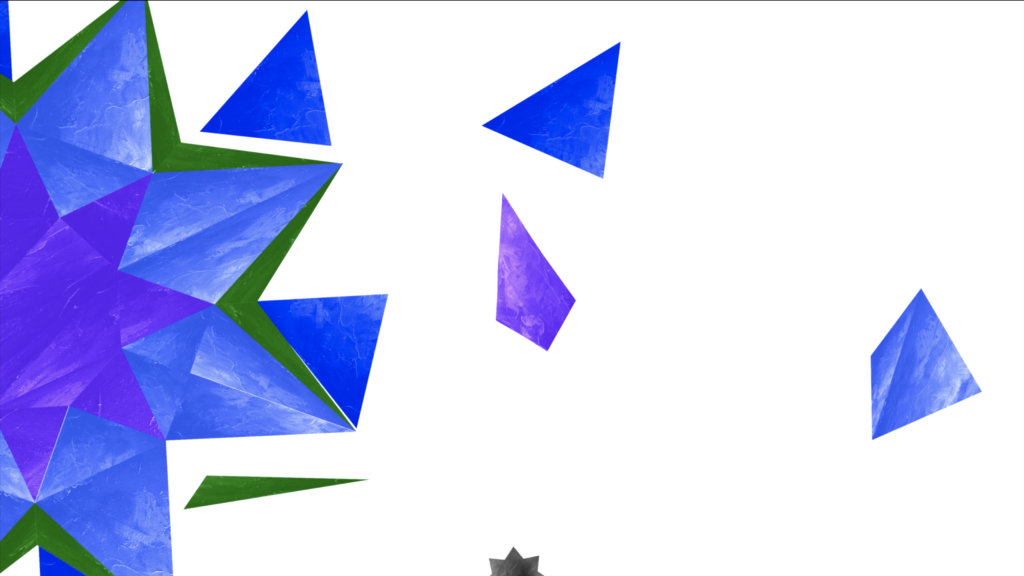
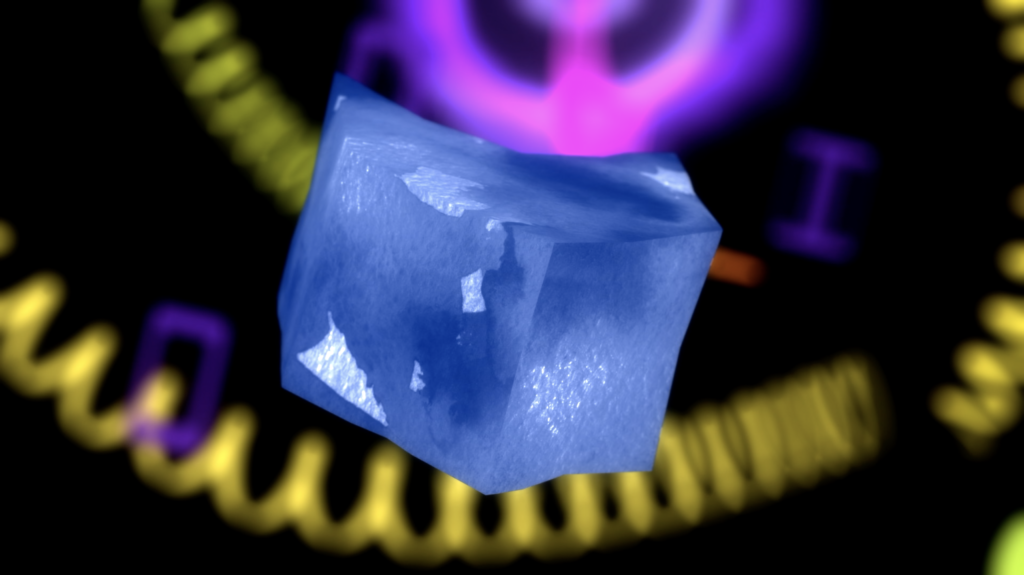
Screenshots of “Flatland” show the shapes in 2D and 3D form, as well as the intricately designed grid world of the film.
Last week, the Design Cultures & Creativity (DCC) program presented the debut screening of “Flatland,” created by a team led by senior computer engineering major Elyas Masrour ’24, the program’s first Creative-in-Residence. The Project Flatland team, comprised of DCC students and friends, met each week in the DCC Makerspace to take the film from its initial concept to its final form through storyboarding, design, animation and original music composition.
“DCC was such a great experience for me during my first two years at UMD, and I wanted to find one more way to be involved before I graduate,” said Masrour. “Unlike the individual capstone project at the end of my second year, I wanted to do something collaborative with all the incredible artists and designers in this program.”
Last year, Masrour took his concept to associate director and then-interim director Dr. Jessica Lu, who encouraged him to send a proposal, inaugurating DCC’s first Creative-in-Residence (CIR) program for juniors and seniors, which comes with a year of funding. He wanted to do a creative spin on the satirical novella, “Flatland: A Romance of Many Dimensions,” by Edwin Abbott Abbott, first published in 1884, which explores a two-dimensional world inhabited by geometric shapes. The story follows the experiences of a square who discovers the existence of higher dimensions beyond Flatland, leading to reflections on society in the Victorian era during which it was published.
“The novella introduces interesting philosophical questions and social commentaries, but with this film, I wanted to focus more on the mathematical themes,” said Masrour. “I wanted to use shapes to show the journey from 2D to 3D and to convey what happens when we break out of the constraints that box us into particular communities.”
Project Flatland kicked off last fall with an initial interest meeting, which drew about 40 DCC students and generated a lot of excitement for what was possible. Subteams were created for storyboarding, design, animation and sound/music. Over the course of the year, the team’s size fluctuated as students came and went, but each student involved left an important mark on the creative process.
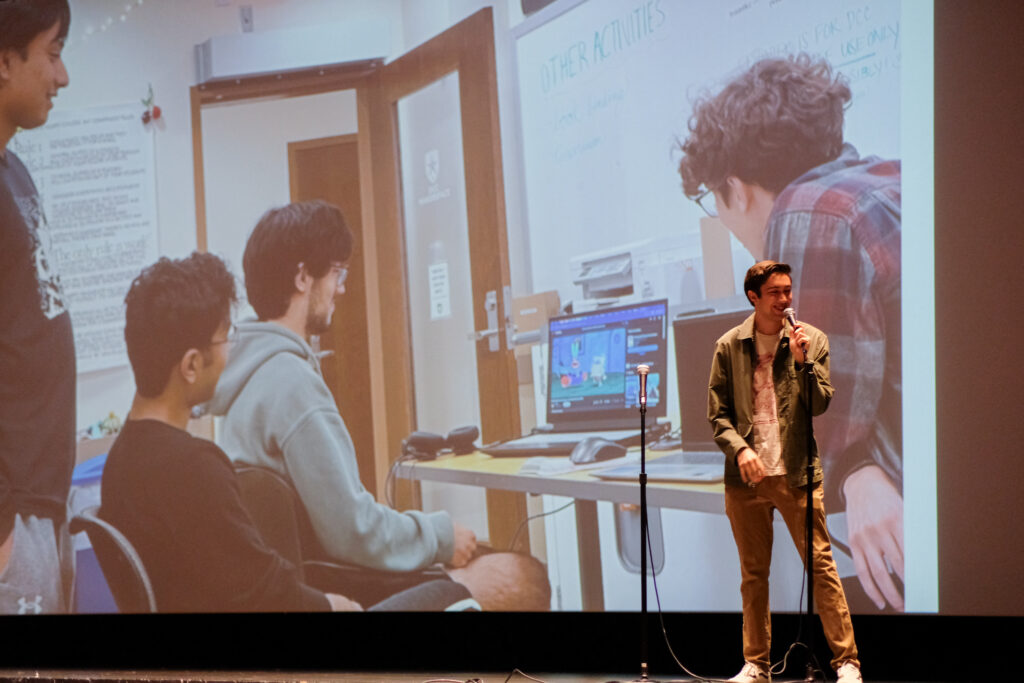
Senior computer science major Eileen Wang ’24 was on the storyboarding and animation teams, which created fascinating visuals and a tile design inspired by the Alhambra and Islamic art. They created digital art on tablets and transferred the images to Blender software to build the animations. The result was a geometric playground for the three main characters—a blue concave hexagon, purple kite-shaped diamond and green triangle—to race through as gray octagram star-shaped security guards chase them. The scenes were injected with exciting effects, like when the diamond realized that its pointy tip could break through walls, which shattered after a few forceful pecks, allowing its comrades to rush past.
“The coolest part of the project was that everyone had to learn a new skill,” said Wang. “My favorite scene to draw and animate was when the shapes blast off into the 3D world,” a moment which signaled the end of the chase and breathed a sigh of relief into the film.
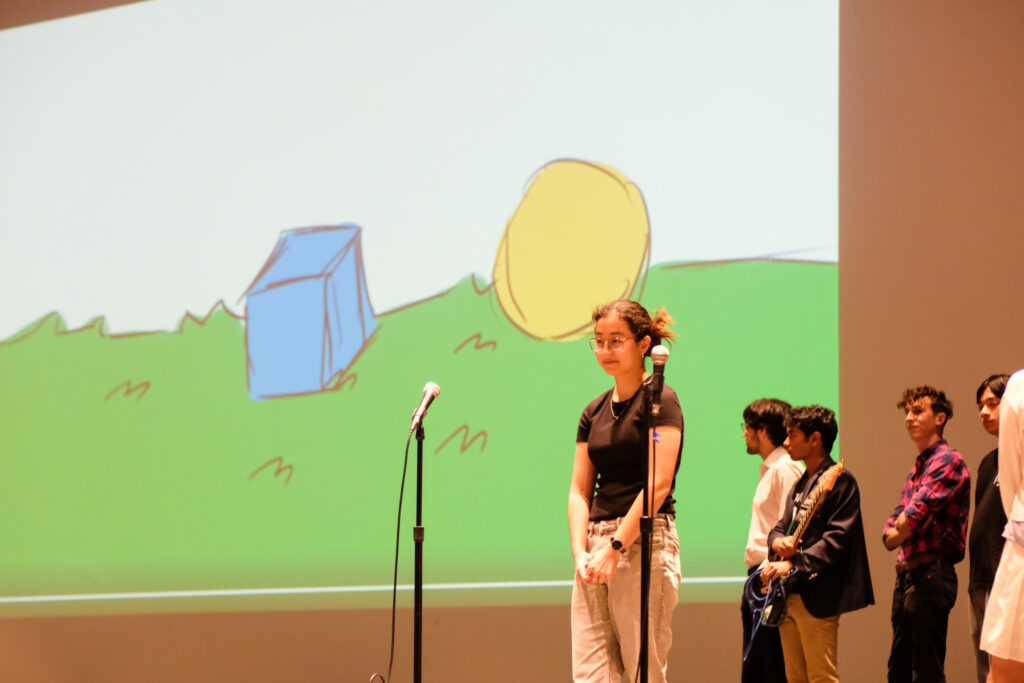
The film’s action was largely driven by original compositions created by the music and sound design team. The jazz-influenced soundscape evoked classic video game chase scenes, keeping the viewer on the edge of their seat while also bouncing along with the fun, driving rhythms. The music team combined digital MIDI samples with live music composed and played by freshman psychology major Shiham Siddiqui ’27 on electric guitar.
“We took inspiration from a lot of sources, like police chase scenes and big band orchestras,” said sophomore immersive media design major Mateo Rodriguez ’26, who has been composing music digitally since high school. “I enjoy digital composition because it allows me to get songs out of my head and into the audio workstation so we can create a vision for the piece together.”

Flatland is the first project to be completed through DCC’s CIR program, allowing students to extend their creative experiences and make the most of the resources and community support that DCC offers.
“Elyas Masrour brilliantly led this project as our inaugural Creative-in-Residence in a way that showcases the ingenuity of DCC students across the domains of digital art, animation, music and even custom font-making,” said DCC’s faculty director Damien Pfister. “The joy and wit characteristic of our students brought this 19th century story into the 21st.”
The film was a massive collaboration that required students to independently take initiative and keep the process moving forward, competing with many other curricular and extracurricular responsibilities. As the project’s lead, Masrour gracefully took on the challenge of interfacing with all the subteams and learned how to maintain his core concept while inviting creative contributions from the team.
“I had to start with a strong vision but also take in new ideas,” he said, “Initially I imagined something wackier and weirder, but it turned into something quite somber. I learned how to be attentive to when the art tells us what it wants to be.”

Elyas Masrour graduates this spring with a degree in computer engineering. He plans to continue his work at the intersection of technology, engineering, storytelling, art and design.
To learn more about DCC’s Creative-in-Residence program and apply with your own creative idea, visit dcc.umd.edu/learning/creative-in-residence.
To learn more about the Honors College’s DCC living-learning program, visit dcc.umd.edu.
By Kate Spanos

